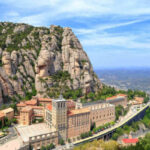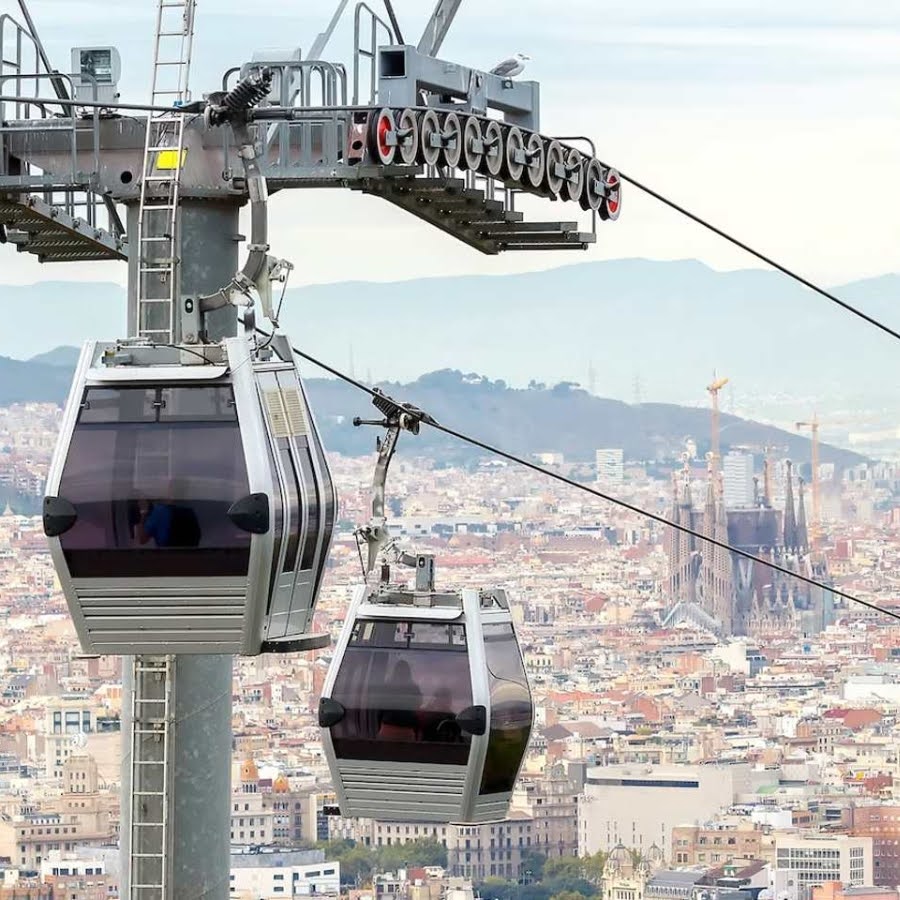
Barcelona is a city renowned for its rich history, stunning architecture, and unique modes of transportation. Among these, cable cars and funiculars stand out as popular options for both locals and tourists, offering breathtaking views of the city's landscape while navigating its hilly terrain.
In this article, we will delve into the distinct characteristics of these two fascinating transportation systems. Join us as we explore the question What is the Difference Between a Cable Car and a Funicular: Exploring Barcelona's Unique Modes of Transportation, shedding light on how each serves its purpose in this vibrant metropolis.
What is a Cable Car? Understanding Barcelona's Aerial Transportation
A cable car is a type of aerial tramway that is suspended from cables, allowing it to glide smoothly above the city's streets and landscapes. In Barcelona, these cable cars are not only a means of transportation but also a popular tourist attraction, offering stunning panoramic views of the city. Visitors can enjoy unique perspectives of landmarks such as Montjuïc and the Mediterranean Sea while traveling between different points of interest.
There are several key features that define cable cars in Barcelona:
- Suspension System: Cable cars are typically supported by a system of cables and pulleys.
- Flexibility: They can traverse challenging terrains, making them ideal for hilly areas.
- Scenic Views: Passengers are treated to breathtaking vistas, enhancing the travel experience.
Unlike funiculars, which operate on a fixed track and are primarily designed for steep ascents and descents, cable cars can provide a more versatile route across varied elevations. This distinction between funicular vs cable car highlights how each mode of transport is tailored to meet specific needs in Barcelona's transportation network. While funiculars are efficient for steep slopes, cable cars excel in offering a leisurely ride above the city.
The most famous cable car in Barcelona is the Telefèric de Montjuïc, which connects the city to the Montjuïc mountain. This cable car serves as both a practical transportation option and a captivating experience for tourists, making it a must-try for anyone looking to explore the scenic beauty of Barcelona.
Exploring Funiculars: The Unique Design and Functionality in Barcelona
Barcelona's funiculars are remarkable engineering feats that blend functionality with aesthetic appeal. Designed to navigate steep inclines, these transportation systems operate on a fixed track, ensuring a stable and smooth ride for passengers. The unique design of funiculars in Barcelona is characterized by their dual cabin system, where one cabin descends as the other ascends, allowing for efficient use of energy and space.
One of the most notable funiculars in the city is the Funicular de Montjuïc, which connects the Paral·lel metro station to the top of Montjuïc hill. This route not only serves as a practical means of transportation but also offers stunning views of the surrounding landscape. As riders ascend, they are treated to a visual feast that includes the city skyline and the vibrant colors of the gardens below.
The operation of funiculars is particularly advantageous in Barcelona's hilly terrain, making them a preferred choice for steep climbs. Key features that set funiculars apart from cable cars include:
- Fixed Track: Unlike cable cars, funiculars run on a designated track, providing a direct route for commuters.
- Energy Efficiency: The counterweight system used in funiculars allows them to use less energy compared to traditional elevators or other modes of transport.
- Accessibility: Funiculars are designed to accommodate passengers with mobility issues, making them inclusive modes of transport.
When comparing funicular vs cable car, it’s evident that funiculars excel in steep areas, while cable cars offer scenic rides across varied elevations. Both modes contribute significantly to Barcelona's transportation network, enhancing the experience for both locals and visitors alike, and ensuring that the city’s stunning vistas are accessible to everyone.
Cable Car vs. Funicular: Key Differences and Similarities Explained
When it comes to understanding the difference between a cable car and a funicular, the primary distinction lies in their operational mechanics. A cable car utilizes a system of cables suspended high above the ground, allowing it to traverse varied landscapes effortlessly. In contrast, a funicular operates on a fixed track and is specifically designed for steep inclines, making it an optimal choice for significant elevation changes in a short distance.
Both transportation methods serve unique purposes and enhance Barcelona’s urban mobility. Here are some key similarities and differences:
- Route Flexibility: Cable cars can cover longer distances and navigate complex routes, while funiculars are limited to fixed tracks.
- Passenger Experience: Cable cars often provide panoramic views, whereas funiculars focus on efficient transport for steep climbs.
- Energy Use: Funiculars utilize a counterweight system, enhancing energy efficiency compared to the electric motors used in cable cars.
In practical terms, the choice between funicular vs cable car in Barcelona often depends on the traveler's destination and the desired experience. Cable cars are ideal for sightseeing, offering spectacular views of the cityscape, while funiculars provide quick access to elevated areas, making them a preferred option for commuters. This makes both modes indispensable in the city's transportation network.
Ultimately, the unique characteristics of both systems contribute to the charm of Barcelona’s transit options. While cable cars glide above the city, providing a leisurely journey, funiculars ensure efficient travel up steep gradients, allowing passengers to enjoy the beautiful vistas that Barcelona has to offer.
Top Cable Car and Funicular Rides to Experience in Barcelona
When in Barcelona, one of the top experiences is riding the Telefèric de Montjuïc. This iconic cable car takes passengers from the base of the Montjuïc mountain up to its summit, providing stunning views of the city below. As you glide above the gardens and historic sites, it’s a perfect way to appreciate Barcelona's vibrant landscape. This cable car ride exemplifies the charm of a cable car, highlighting the differences in experience when compared to a funicular.
For those seeking a more vertical adventure, the Funicular de Montjuïc is a must-try. Connecting the Paral·lel metro station to Montjuïc hill, this funicular offers a smooth ride that efficiently ascends the steep gradient. Passengers are treated to impressive views while benefiting from the funicular's energy-efficient design, making it a practical yet scenic choice for travelers eager to explore the area.
Another exciting option is the Funicular del Tibidabo, which provides access to the Tibidabo Amusement Park and the stunning Temple of the Sacred Heart. This funicular not only serves as a mode of transportation but also offers breathtaking vistas of the city skyline as it climbs. Riders can enjoy the beauty of Barcelona while experiencing the traditional mechanics of a funicular, showcasing the unique functionality that distinguishes it from cable cars.
In summary, both cable cars and funiculars in Barcelona offer unique experiences that cater to different needs. The scenic rides of cable cars like the Telefèric de Montjuïc contrast with the practical and efficient routes of funiculars such as the Funicular de Montjuïc and Funicular del Tibidabo. Whether you choose to soar above the city or ascend steep hills, both modes of transport enhance the exploration of Barcelona's captivating sights.
A Guide to Barcelona's Iconic Cable Cars and Funiculars
Barcelona’s cable cars and funiculars offer more than just transportation; they provide unforgettable experiences that showcase the city’s remarkable landscape. The Telefèric de Montjuïc is a prime example of a cable car that allows passengers to soar above the bustling city, offering panoramic views of both the urban environment and the Mediterranean coastline. This aerial journey not only transports visitors but also serves as a delightful introduction to the scenic beauty that Barcelona has to offer.
On the other hand, the funiculars in Barcelona, like the Funicular de Montjuïc, are designed with efficiency in mind, specifically for navigating the steep slopes of the city. With their dual cabin system, these funiculars minimize energy consumption while ensuring a smooth ride for passengers. This practical approach not only highlights their functionality but also makes them a favorite among commuters and tourists alike, especially those eager to explore elevated areas.
When comparing funicular vs cable car, one notable aspect is the passenger experience. Cable cars emphasize leisure and sightseeing, providing travelers with breathtaking views during their ride. In contrast, funiculars focus on practicality and efficiency, making them ideal for quick ascents. Both modes, however, play a crucial role in enhancing accessibility to Barcelona's stunning vistas, ensuring that whether you choose to glide above the city or travel up steep inclines, the beauty of Barcelona is always within reach.
Ultimately, both cable cars and funiculars reflect the ingenuity of Barcelona’s transportation network. Each system caters to different travel needs, with cable cars offering leisurely rides through the sky while funiculars provide efficient access to elevated terrains. These distinctive features contribute to the overall charm of the city, making both forms of transport essential for exploring the captivating sights of Barcelona.
The History of Cable Cars and Funiculars in Barcelona's Urban Landscape
The history of cable cars and funiculars in Barcelona reflects the city's unique approach to urban transportation. The Telefèric de Montjuïc, inaugurated in 1970, was one of the first cable cars to connect the city with its elevated regions, serving both practical and recreational purposes. Initially built for the 1929 International Exposition, this cable car quickly became a beloved mode of transport, offering stunning views of the city and the Mediterranean Sea.
Similarly, the development of funiculars can be traced back to the late 19th century. The Funicular de Montjuïc, opened in 1928, was designed to help commuters navigate the steep slopes of Montjuïc hill. This innovation not only facilitated easier access to the area but also highlighted the importance of funiculars in connecting various urban landscapes, showcasing the contrasting yet complementary nature of funicular vs cable car systems in the city.
Over the years, Barcelona has expanded its cable car and funicular network to accommodate the growing needs of its population. Today, the city boasts several key routes, including the Funicular del Tibidabo, which opened in 1901. This funicular exemplifies the integration of transportation and leisure, allowing visitors to access the Tibidabo Amusement Park while enjoying incredible panoramic views. The evolution of these systems underscores their significance in shaping Barcelona's urban environment.
In summary, the historical journey of Barcelona's cable cars and funiculars showcases a commitment to innovative transportation solutions. Each mode serves distinct purposes, with cable cars offering scenic experiences and funiculars providing efficient travel on steep gradients. Together, they enhance the accessibility of Barcelona's iconic sights, reflecting the city's dynamic urban landscape and its continuous evolution.
 Discovering the Equivalent of Montserrat: Unveiling Barcelona's Hidden Gem.
Discovering the Equivalent of Montserrat: Unveiling Barcelona's Hidden Gem. The Enigmatic Monastery near Barcelona: Unveiling its Fascinating Secrets
The Enigmatic Monastery near Barcelona: Unveiling its Fascinating Secrets The Enigma of Montserrat's Ghost Town: Unraveling Its Mysteries
The Enigma of Montserrat's Ghost Town: Unraveling Its MysteriesIf you want to know other articles similar to What is the Difference Between a Cable Car and a Funicular: Exploring Barcelona's Unique Modes of Transportation you can visit the category WHERE YOU CAN GO.
Leave a Reply










Read more!